Repointing How Wood Hertfordshire (AL2): At some point in time every building in How Wood will need some maintenance and repair, whether it's a domestic home or a commercial premises. You'll have to act swiftly if your property's brickwork is looking decidedly grotty, with missing or crumbling mortar, seeing as it is only going to worsen if it's ignored. To find a suitable solution to repoint your brickwork and make sure that it remains watertight, you'll need to get hold of a professional How Wood brick repointing specialist.
It is the mortar and bricks that make a property sturdy and protected from the weather. To keep a property warm and dry the mortar has to be in good enough condition to prevent any draughts and dampness from forcing its way in through holes or gaps. How can you tell when your brickwork in How Wood needs to be repointed?

It really is just a matter of checking your brickwork visually. If you are able to spot problems then you've got a problem. In sections which are out of reach, for instance on chimneys or under eaves; you may need to call on the services of a professional to help you, however in the majority of cases you'll be able to spot any obvious signs of degradation for yourself.
You've also got to think about the questions of safety that cracked or eroding mortar can cause. Mortar is the binding agent that holds the shape and structure together in any How Wood property, and if badly damaged can affect the integrity of a building. When contemplating damage to property and the potential risk of injury, any weakness in the integrity of a building can have alarming consequences, and this is even more concerning in buildings with higher properties or chimneys.
If your mortar has been neglected through the years, or you are renovating an older property in How Wood, you may also have to restore brickwork that has been damaged or weakened. It's crucial that you hire a trustworthy brick repointing contractor in How Wood, so that they can repair or replace any defective brickwork before the repointing is undertaken. This should guarantee the perfect finish to your house, and no horrible surprises down the road.
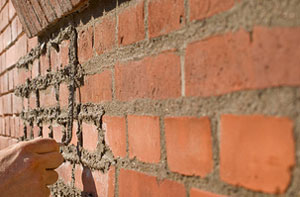
Quite a few How Wood properties in past times have had their external brick walls painted or plastered over to help shield the brickwork. It could be pointing to more severe damage beneath the surface, if you see cracks, flaking or bubbling of the render or paint. Bringing in a certified brickwork and repointing contractor, is really the only way to figure out a problem of this type, and discover the real cause. By making use of this type of specialist service you'll be able to make sure that your home is safe and looking great.
WHAT ARE THE STEPS FOR REPOINTING BRICKWORK IN HOW WOOD?
Depending on the type of property you have, repointing may entail working at height, and can be a fairly lengthy process. A visual inspection is the initial step in the process and will ascertain the extent of the remedial work that is needed on your home. This inspection will allow them to give you a price quote for the the entire project. Don't automatically assume that the best estimate is the cheapest estimate, and make sure you get at least 3 quotes before make up your mind.
Ladders, or even scaffolding may be required to get to hard to reach parts of your building, and a second site survey may be essential to assess this, once you have agreed to a specific quotation. A price quote after the follow-up survey might be higher owing to problems discovered during this more in depth inspection. Additional work is likely to be required if your home in How Wood is over sixty years old and has never undergone repointing.
Work can start once all the issues have been identified. So that a safe working platform is available for the repointing crew, some type of scaffolding will almost certainly need to be built on most How Wood properties. This may even be necessary for bungalows and single storey homes. A protective shielding can be fixed in place, when the scaffold is up. This could be in the way of plastic sheeting to collect any dust and debris that's created during the process.
The adjustment or removal of pipework, cabling and conduits might be necessary, to permit easy access to the brickwork on all of the wall surfaces. On completion of the project all cables and pipes will be put back into their appropriate positions.
If your brickwork is pebble-dashed, painted or rendered, these coatings will now be removed to enable the repointing team to get on with the restoration work. The brickwork that's hiding behind these coverings will be sanded and cleaned to ensure a uniform finish for your exterior walls.

A reliable How Wood repointing company will be able to prepare a test panel on your property in order to help you to picture the different mortar finishes that are available, (Recessed, Tuck, Weather Struck or Flush pointing). This should allow you to get an idea of the final result and ensure your satisfaction with the finished product with regard to style and colour.
Now the messy work begins as the old, damaged mortar is removed by raking and scraping out the brick joints. This is a time consuming process and entails the chipping or grinding away of old mortar and brushing out all the loose debris and dust to provide a good platform for the application of new mortar. Particular attention is taken around windows and doors because any movement in the brickwork can result in problems with their opening and closing.
Something that needs to be avoided is the new mortar drying out too rapidly, and this can be averted by dampening the brickwork. The slower drying time helps to stop the mortar from cracking and becoming inflexible, which can lead to a weaker joint. During the mortar application there'll be excess mortar and smears on the adjoining brickwork that can look untidy, but this will be removed once it has dried. The walls will be divided into areas, and each will be repointed, allowed to dry, and then cleaned off before the repointers move along to the next section.
At this point the necessity for any brick replacement, lead flashing work or chimney repairs will be completed by your contractor.
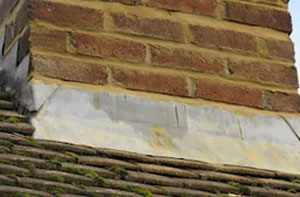
After cleaning the walls for one final time, to obtain a uniform visual appearance, any rendering or re-painting of the completed wall surfaces can take place. The final stage of the project will see all cables, pipes and other fittings fixed back in their rightful positions, scaffolding dismantled and all building waste removed from the site.
The repointing of your house by a professional How Wood company should mean that you won't need to worry yourself about your exterior brickwork for another fifty years or more. They ought to also provide a guarantee for their work and be supported by professional certifications and qualifications in the building and construction industry.
Such accreditation might include: the NHBC (National House-Building Council), the FMB (Federation of Master Builders) and the NFBC (National Federation of Building Contractors), while qualifications can range between Diplomas, NVQ's and City & Guilds from building industry specialists such as the Chartered Institute of Building (CIOB). The Construction Skills Certification Scheme is now compulsory for all workers in the construction industry and they must be willing to show their CSCS card on request to demonstrate their suitability to be present on site.
Beyond Aesthetics: Why Repointing is Essential for Building Health
Mortar, though seemingly robust, is susceptible to several things that can cause its deterioration with the passage of time:
- Structure movement: Stress from shifting foundations and other structural movement can cause the mortar joints to crack and separate, affecting the integrity of the building.
- Weather conditions: Persistent exposure to extreme temperatures, rain and wind wreaks havoc on mortar, weakening its structure and causing it to crack and crumble over time.
- Incompatible mortar composition: Using the wrong sort of mortar for a particular application can lead to faster deterioration and possible incompatibility with the existing materials.
- Natural ageing: Time can take its toll on mortar, naturally weakening its strength and making it more susceptible to damage.
The process of repointing involves meticulously removing the weakened or damaged mortar and replacing it with fresh, compatible material. This process restores the bond between the bricks or stones, effectively reinforcing the structure. It is especially vital for older buildings in How Wood, as the original mortar may have weakened over the years. By performing regular repointing, we can extend the lifespan of structures, thereby preserving their historical and architectural significance.
The Key Benefits
- Maintaining historical value: Repointing with traditional materials and methods is vital for older or historical buildings in How Wood to maintain their cultural heritage and architectural integrity.
- Preventing further damage: To avoid costly and extensive future damage, early detection and repair of damaged mortar joints are essential to prevent further structural deterioration.
- Waterproofing: Damaged mortar joints allow water to seep into structures, leading to serious consequences like mould, rot, and compromised structural integrity. By creating a watertight seal, repointing prevents these issues.
- Enhancing visual appearance: The aesthetic appeal of a building is significantly enhanced through repointing. Stone and brickwork facades rely on mortar joints to contribute to their overall appearance. A well-maintained and fresh appearance is achieved through repointing, enhancing the building's visual appeal.
Repointing is a crucial maintenance practice that brings numerous benefits to stone and brickwork structures in How Wood. Long-term building care benefits significantly from repointing, which prevents water ingress, preserves structural integrity and enhances aesthetics.
Repointing specialists are available in Chiswell Green, Garston, Watford, Napsbury, Potters Crouch, Frogmore, St Albans, Smug Oak, Bedmond, Sopwell, Abbots Langley, St Julians, Colney Street, Park Street, Tyttenhanger, Radlett, Bricket Wood, Aldenham, in the following postcodes: AL2 2JG, AL2 2HH, AL2 2DQ, AL2 2NX, AL2 2BN, AL2 2ND, AL2 2NF, AL2 2EF, AL2 2AS, and AL2 2EU, as well as in How Wood itself. How Wood repointing contractors will typically have the telephone dialling code 01727 and the postcode AL2.
Brickwork Crack Stitching
When there are substantial cracks in brickwork structures, they can often be repaired using a procedure called brick crack stitching. The process involves placing stainless steel rods into the mortar bed of the damaged brickwork and securing them with a specialised grout. The aim of this strategy is to reinforce the weakened brickwork and prevent further cracking by providing additional stability and support. The flexible design of the stainless steel rods used in this process enables them to move with the brickwork, effectively absorbing any additional stress that may occur. This technique isn't limited to any particular structure and can be used for repairing cracks in a host of brick-built structures, such as bridges, walls, chimneys and tunnels. It is a relatively simple and effective solution to a common problem in brick-built structures and can extend the life of the structure far into the future. This technique offers an affordable and practical alternative to other repair solutions, such as rebuilding or repointing, and can be used on both contemporary and historical structures. It should be noted that only qualified specialists who are experienced in crack stitching should take on this task, as incorrect installation can have considerable implications for the structure's longevity and safety.
Tuckpointing How Wood
What is Tuckpointing? With old and battered brick or stonework where the mortar is unstable and crumbling, tuckpointing is a handy restoration process. The aesthetic look of walls can be augmented with this technique, giving the illusion that they are in far better condition than they actually are, and giving the impression of well-formed brickwork.
All of the crumbling, old mortar is removed and replaced with a new colour-matched mortar which is as close as possible to the colour of the brick or stone from which the wall is constructed. Then a thin strip of mortar which is contrasting in colour is inserted, making it appear like the formerly wide and untidy joints are neat and even.
Without the requirement for any disruptive renovations, the outcome of tuck-pointing can be quite spectacular, especially when observed from a distance, and can vastly enhance the visual appearance of a wall.
Brick Cleaning
Brick cleaning is a technique that removes stains, grime and muck from brick walls. Bricks may lose their appearance and original colour as a result of being exposed to pollution and the weather over time. The process of brick cleaning can help to improve the building's appearance by restoring the bricks' original colour and texture, thereby enhancing its visual appeal.
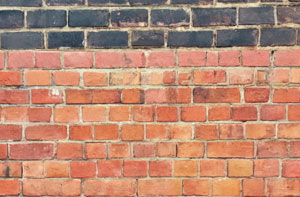
There are various methods for cleaning brickwork, including sandblasting, pressure washing and chemical cleaning. The type of stains and the condition of the bricks will dictate the method used for cleaning. A specialist brick cleaning company with experience and expertise in the field can ensure an effective and safe cleaning process that preserves the bricks and the surrounding area.
The practical benefits of brickwork cleaning are often overlooked, in addition to the aesthetic enhancements it brings. The removal of dirt from bricks can reduce the risk of water absorption, which can prevent the development of dampness and mould. Brick cleaning can also increase the longevity of the bricks and reduce the need for costly repairs in the future. The use of eco-friendly cleaning methods and products by a brick cleaning service can help to reduce the overall environmental impact of the project. Also, homeowners should choose a company that provides a comprehensive quotation and project timeline to aid in planning and budgeting.
Ridge Tile Repointing How Wood
Ridge tiles and mortar joints should be inspected at least once every two years. Repointing simple mortar cracks can prevent leaking roofs and costly re-roofing work in How Wood. Pay extra attention to ridge tiles because they're exposed to the extremes of the weather from all sides and may exhibit cracks in the mortar joints before other tiles on the roof. If you discover cracks in the mortar between ridge tiles, the options are repoint the joints or rebed the ridge tile.
If the cracks are small and the tile seems firmly bedded, repointing the mortar is a satisfactory option. If the cracks in the mortar are as wide as the mortar joint itself and there seems to be some movement in the ridge tile, it's a better idea to rebed the complete tile instead of repointing. If you repoint a tile that is no longer tightly bedded, the repair isn't going to last very long and the reappearance of the crack is inevitable.
Unfortunately, occasionally a ridge tile has to be rebedded instead of repointed which requires a touch more work. Again, be sure to follow all safety precautions while working on the roof. Use a hammer and chisel to remove the mortar as well as the ridge tile. Use the chisel and hammer to remove the mortar from the bed on the roof, and mortar from the bottom of the ridge tile. As soon as the ridge tile is off, replacing the ridge iron is recommended, especially if there's any sign of rust. Remove any organic matter such as mould or moss and use a fungicide to make sure the area is protected in the future. Then soak the area in water whilst mixing mortar. Mix a stiff mortar in a ratio of 3:1 (sharp sand: cement). Dampen the tile and roof as you work. Apply mortar to either side of the tile and use a trowel to lay a bed of mortar on the roof. Place the tile on the mortar bed and press firmly down. Remove any mortar that squishes out between joints. Ensure the joint gaps are filled, and smooth joints with pointing trowel.
Patch Repointing How Wood
Unlike full-blown repointing, which involves replacing mortar across the entire building surface, patch repointing concentrates on particular damaged areas, making it a more cost-effective and focused method. For brick and stonework, especially in older buildings and structures in How Wood, patch repointing the mortar is crucial. Bricks themselves may endure, but the mortar between them weakens with age due to weathering and wear. To prevent further damage and ensure the structure's stability, repairing these areas becomes essential when this occurs. Patch repointing tackles impaired mortar by carefully removing it and infilling the gaps with fresh mortar that replicates the original as accurately as possible. This process offers a two-fold benefit: fortifying the structural integrity of the wall and restoring the beauty of the brickwork.
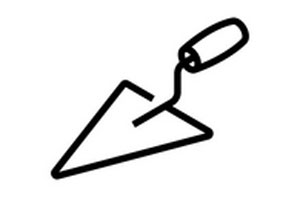
Preserving their properties, a growing number of How Wood property managers and householders are turning to patch pointing and repointing services. In regions with severe weather conditions, these services are especially crucial, as water can seep into cracks, freeze, and cause serious damage. An effective and seamless repair is ensured by professionals in How Wood, who carefully select the appropriate mortar to complement the building's age and style.
Because more serious structural issues can be prevented, investing in patch repointing can be a long-term cost-saving measure. Areas that require attention can be highlighted through routine inspections, which allows for repairs to be executed in a prompt and timely manner. By employing professional repointing services, home and business owners in How Wood can maintain their buildings in a safe, functional, and aesthetically pleasing condition for the months and years ahead. (Patch Repointing How Wood)
Brickwork Joint Raking How Wood
The process of removing old mortar from between the bricks in a wall is commonly referred to as brickwork joint raking. Usually, this is done before repointing, where new mortar is applied to the joints. Raking out the old mortar helps ensure the new mortar bonds nicely with the brickwork, providing a strong and durable finish.

To avoid damaging the bricks, the process involves using specialised tools like a raking bar or a mortar raking blade to carefully remove the existing mortar. To allow the new mortar to properly adhere and set, it’s important to remove the mortar to the correct depth, normally around fifteen to twenty millimetres.
Raking out the joints improves the appearance and longevity of brickwork. To keep the brickwork looking great and maintain the integrity of the building, it prevents water ingress and structural damage. Consequently, the raking of brick joints is an essential step in restoring and maintaining brick walls in How Wood. (Brickwork Joint Raking How Wood)
Garden Wall Repointing How Wood
Garden wall repointing is an essential maintenance task that helps keep your garden walls in How Wood strong and looking good. The wall's integrity and aesthetics can suffer when, through prolonged exposure to the elements and natural ageing, the mortar connecting the masonry units degrades. To restore a wall's stability and appearance, repointing removes old, deteriorated mortar and replaces it with fresh mortar.

The first step in repointing a garden wall in How Wood is to cautiously chip out the impaired mortar from the joints. To prevent damage to the stones or bricks, this process must be done quite gently. After removing the old mortar, fresh mortar is mixed and applied to the joints, ensuring it is compacted properly to form a solid bond and seal.
Repointing doesn't just improve the strength of your garden wall in How Wood but also enhances its visual appeal. A well-repointed wall can substantially enhance your garden's overall look, imparting a tidy and well-cared-for appearance. To protect against future damage and decay, repointing safeguards the wall by stopping water from seeping through. Regular maintenance practices, especially repointing, are vital for preserving your garden wall's condition over time. (Garden Wall Repointing How Wood)
Colour Matching Mortar
The fine details are what often give masonry structures, especially historical or older ones, their aesthetic and structural value. One detail that stands out among these for its significance is mortar colour matching. It might seem like a minor aspect to the untrained eye, but to purists and professionals, it's a vital part of any brick restoration project.

Mortar, in the context of masonry, acts as a binding agent for bricks, stones, or other masonry units. The structure is structurally sound and visually appealing thanks to it. The mortar is an important part of a brick wall, as it provides structural integrity and helps to keep the bricks in place. The overall look of a building can be drastically affected by a incongruity in mortar colour, as a result.
The new mortar must be applied seamlessly to the pre-existing mortar during building renovation or repair. The science and art of mortar colour matching is key in this instance. Uniformity is key to maintaining the structure's original visual appeal in renovation projects, creating the illusion that no work has taken place.
The task of matching colours correctly can be more demanding than it initially appears. Considerations to bear in mind include:
- Additives: A variety of additives, from colouring agents to chemicals that improve durability, might be present in modern mortar mixtures. These additives can each influence the final colour of the mortar.
- Binders: Materials like lime and cement, which act as binders, also influence the mortar's colour. The proportions in which they're used can subtly change the shade of the mortar.
- Sand: In determining the final colour of the mortar mix, factors such as the type, granularity and colour of the sand used are crucial. Given that sands from various regions possess different hues, selecting the right sand is of utmost importance.
As time goes by, the colour of mortar can be affected by environmental conditions like fluctuations in temperature, moisture and air pollution. The process, then, is not merely about replicating the mortar's original colour but anticipating the ageing of the new mortar in relation to the old.
Matching the colour of mortar offers more than just cosmetic improvements. Issues such as thermal movement or differential settling can occur when the mortar's strength and composition do not align. As time passes, this may undermine the building's structural integrity.
To conclude, meticulous matching of mortar colour is an essential aspect of effective masonry restoration, calling for a combination of technical knowledge and aesthetic appreciation. Be it a professional commitment to preserving a historical structure or a personal journey of restoring a family home, securing the perfect mortar match is vital. It provides not just visual improvements, but also long-lasting durability and resistance to general wear and tear. (28906 - Mortar Colour Matching How Wood)
Searching Online
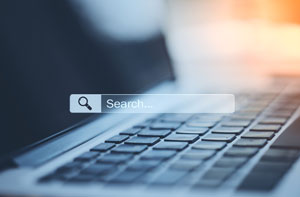
It's considerably easier to look for tradesmen or services nowadays than it was in the past, because we have the benefit of technology and can quickly just do a search on the web. With the help of Ask, Bing, Yahoo or Google you can receive on the spot results that will make your search easier, though you need to be vigilant. One difficulty is often that the 1st page listings displayed by the major league search engines might not be exactly what you were looking for.
But, inevitably you'll key in "How Wood repointing", "repointing How Wood", "repointing near me" or "repointing in How Wood", with the aim of of locating exactly what you're trying to find. However, you'll quickly come to realise that most of the page one listings on these search engines will either be entries from large trade portals such as TrustaTrader, Quotatis, Checkatrade, My Builder, Rated People or Bidvine, online directories like Yelp, Free Index, Yell or Three Best Rated, or "paid for" adverts that Google or whoever has positioned there.
The web sites belonging to real repointing specialists in How Wood will probably be largely unseen on page 2 or 3 of the search results, therefore you will need to dig deeper if you want to contact repointing specialists direct. When you're seeking to find the best individual to do your project, it is smart to make use of every technique open to you, so each titbit supplied by the search process needs to be considered so that you can track down the right repointing specialist in How Wood.
How Wood Skip Hire Services

It is very rare that you'll carry out a home refurbishment project or a garden revamp without producing a fair amount of waste that will need to be removed and disposed of. Some repointing projects will create hardly any waste, while others could result in quite a lot - it depends on the individual circumstances of your specific project. If waste removal isn't mentioned in your quote, you will need to make your own arrangements, because some tradespeople don't have the facility to do this.
The easiest way to dispose of this waste is to hire a skip. If you've never rented a skip before, you might not know that skips come in a range of different volumes and sizes. The different sizes of skip include mini-skips, midi-skips, builders skips and roll-on-roll-off skips, and for different projects skip bags are also available.
For skip hire prices in How Wood CLICK HERE.
How Wood Repointing Tasks
Just Some of the Jobs That a Repointing Specialist Can Do

There is a variety of work that can be conducted by your local How Wood repointing specialist including ridges rebedded or repointed, stone wall repointing, mortar joint re-pointing, the repointing of chimney stacks, rubble masonry, crack injection, masonry restoration, bucket handle pointing and re-pointing, domestic repointing, pointing and re-pointing crazy paving, patch repointing, repointing services, dry verge systems in How Wood, mortar raking, ribbon pointing and repointing, tile repointing, chimney repointing, the repointing of slabs, stone strengthening, pointing and repointing paving, brick colour restoration services, brick & mortar tinting, mortar rake grinding, tuck pointing, chimney repairs, brickwork and masonry decorating, lime mortar repointing in How Wood, stone pointing and repointing, brickwork repointing, valley repointing, and scaffolding hire. Listed are just a handful of the activities that are handled by those specialising in repointing brickwaork. How Wood companies will inform you of their full range of pointing and repointing services.
Repointing Specialists Near How Wood
Also find: Park Street repointing, Frogmore repointing, Watford repointing, Bedmond repointing, Napsbury repointing, St Albans repointing, Chiswell Green repointing, Bricket Wood repointing, Radlett repointing, Smug Oak repointing, Aldenham repointing, Sopwell repointing, Abbots Langley repointing, Tyttenhanger repointing, Potters Crouch repointing, St Julians repointing, Garston repointing, Colney Street repointing and more. Repointing services are widely available in the majority of these locations. With their wealth of know-how and expertise, these talented specialists ensure that your repointing project is a resounding success. Is your brickwork whispering "SOS"? Don't let silence develop into demolition! Seek professional attention now and transform your weary walls into a source of pride for years into the future. Local homeowners can obtain repointing price quotes by going here. Kick-start your repointing project today, without delay!
Repointing Specialist Services How Wood
- Patio Repointing
- Cheap Repointing
- Gable End Repointing
- Brick Repointing
- Repointing Services
- Chimney Repointing
- Repointing Quotes
- Mortar Raking
- Brickwork Repointing
- Wall Repointing
- Household Repointing
- Weather Struck Pointing
- Mortar Repointing
- Repointing

Other Tradespeople in How Wood: Home improvement projects in How Wood will often require the expertise of many different tradesmen, and brickwork cleaning in How Wood, plastering services in How Wood, gutter cleaning in How Wood, stone cleaning in How Wood, a plumber in How Wood, patio cleaners in How Wood, garden wall building in How Wood, chimney removal in How Wood, garden wall renovation in How Wood, floor screeding in How Wood, waste removal in How Wood, stone worktops in How Wood, a bricklayer in How Wood could be required although you're currently looking for repointing services in How Wood. Follow the links to get price quotes for all kinds of home improvement work.
 Repointing How Wood
Repointing How Wood Brickwork Repointing Near How Wood
Brickwork Repointing Near How Wood Repointing Brickwork How Wood
Repointing Brickwork How WoodMore: Repointing Services, Residential Repointing, House Repointing, Chimney Repointing, Repointing Specialists, Repointing Specialists, Chimney Repointing, Repointing, Residential Repointing, Mortar Raking, Pointing, Roof Repointing, Wall Repointing, Pointing, Wall Repointing, Bricklayers, Brick Sealing, Roof Repointing, Brick Cleaning, Patio Repointing, Brick Repointing, Brickwork Cleaning, Brick Pointing, Repointing, Brick Pointing, Brickwork Sealing, Repointing Services, Chimney Repointing, Mortar Repointing, Brick Pointing, Repointing Specialists, House Repointing, Mortar Raking, Repointing Specialists, Roof Repointing.
By county/region: Cornwall, Tyne and Wear, South Yorks, Scotland, Gloucestershire, Essex, Merseyside, Hampshire, Nottinghamshire, Oxfordshire, County Durham, West Yorks
To find local How Wood info go here
Repointing in AL2 area, 01727.
TOP - Brick Repointing How Wood
Repointing Quotations How Wood - Brickwork Repointing How Wood - Repointing Near Me - Household Repointing How Wood - Repointing Mortar Joints How Wood - Brickwork Repairs How Wood - Repointing Chimneys How Wood - Repointing Houses How Wood - Repointing Stone Walls How Wood




